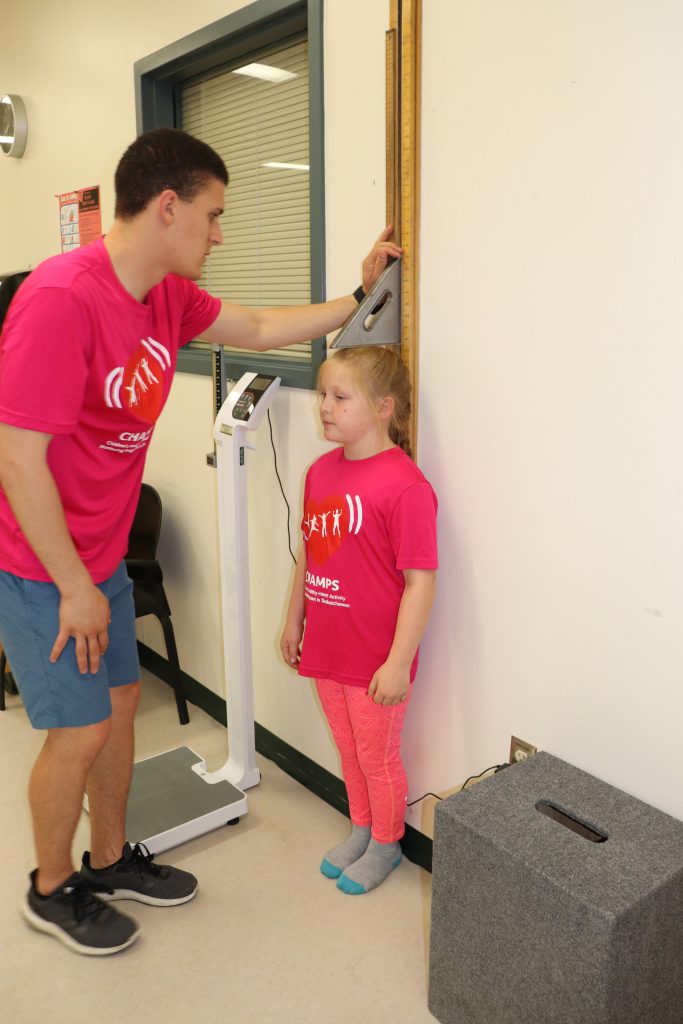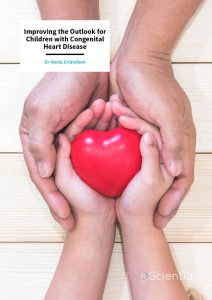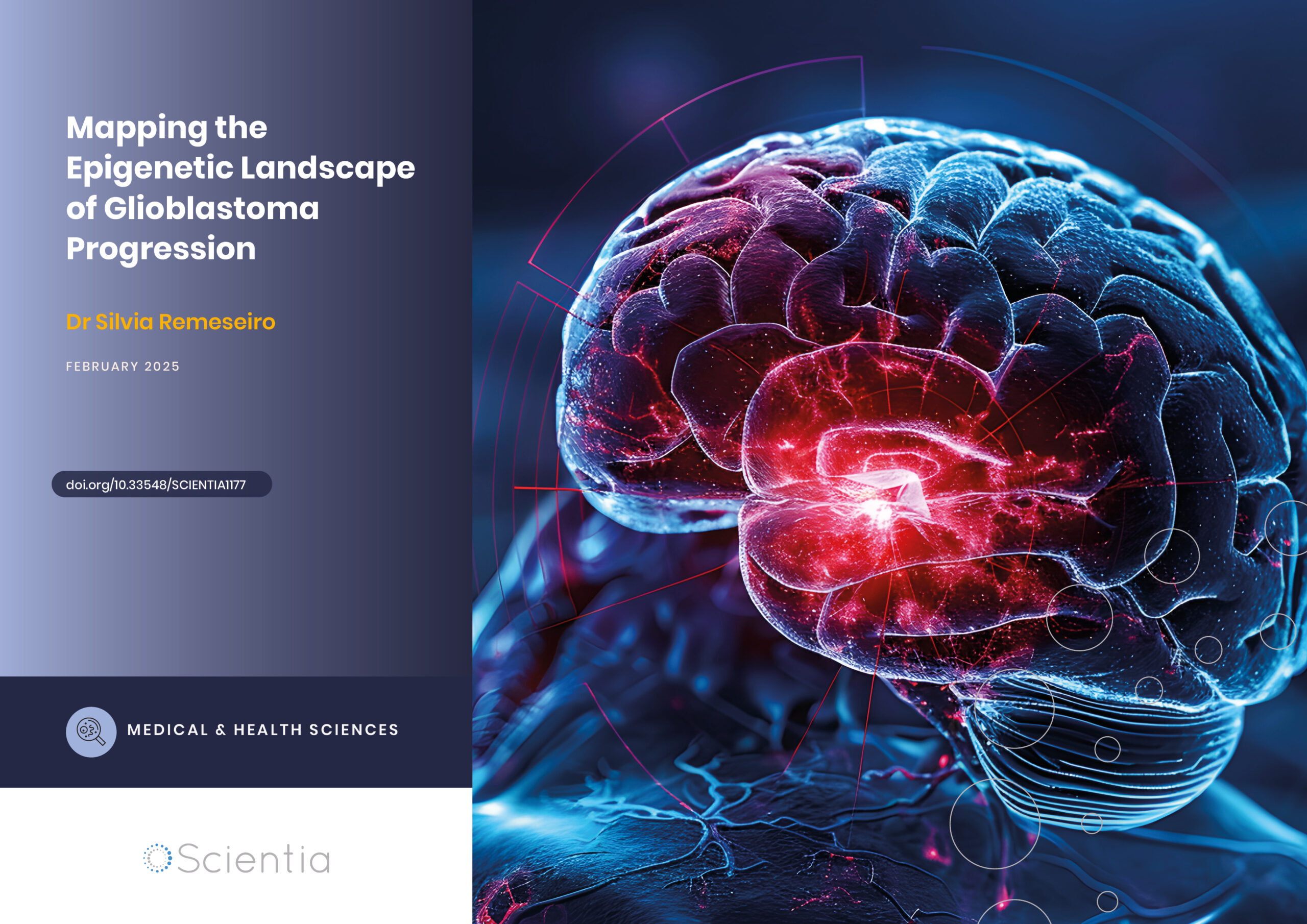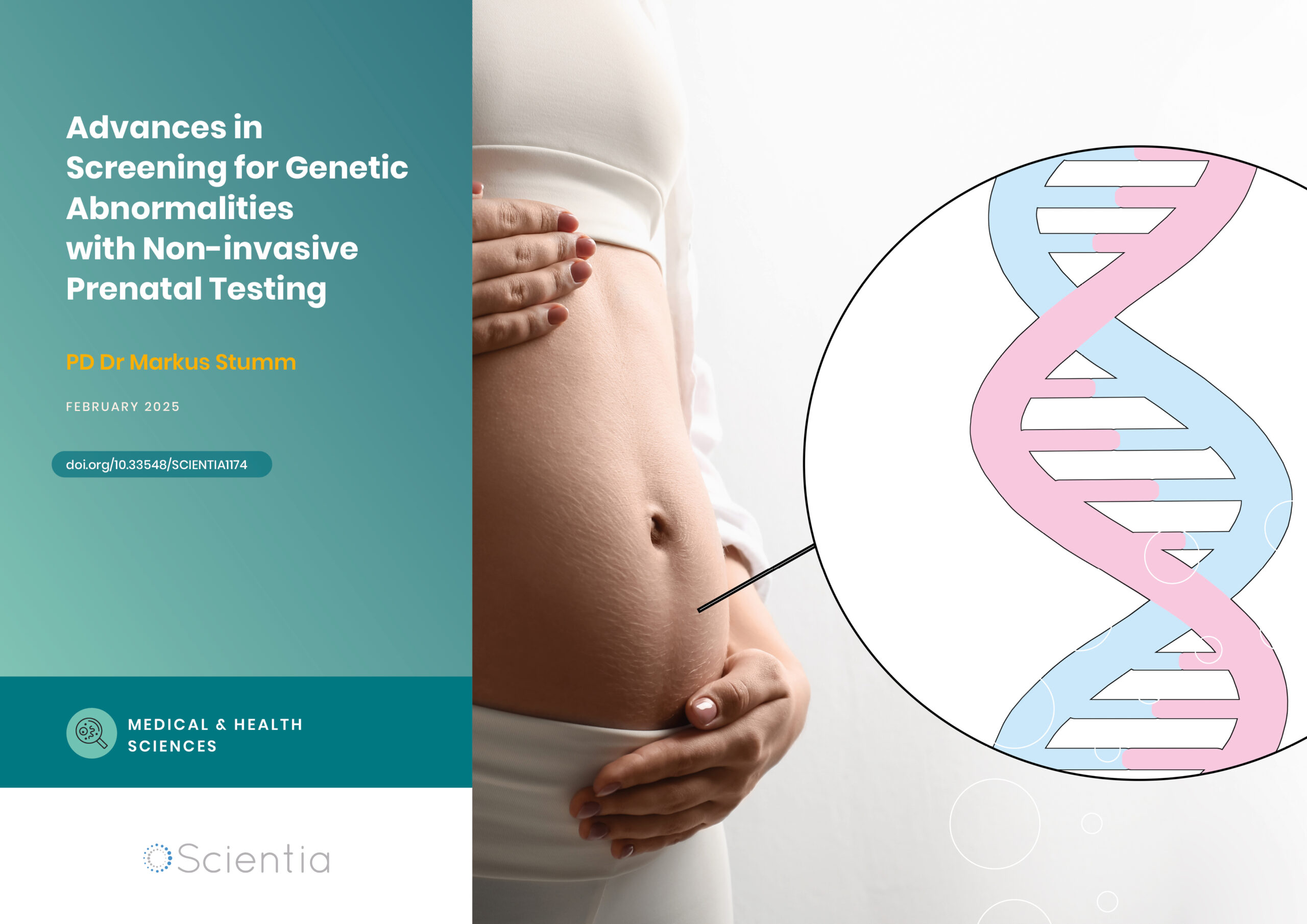Dr Marta Erlandson – Improving the Outlook for Children with Congenital Heart Disease
Congenital heart disease (CHD) is one of the most common birth defects across the globe. Although prospects and survival rates are improving, there is scant understanding or help available to get children with CHD active. Many believe physical activity is risky or outright dangerous, and as a result, children with CHD are at risk of obesity and other chronic conditions later in life. Dr Marta Erlandson from the University of Saskatchewan has aided the creation of CHAMPS, an innovative program for children with CHD, where researchers and children are learning how to manage the disorder from each other.
Congenital Heart Disease
Congenital heart disease (CHD) is a term used to describe a range of birth defects that impact the normal function of the heart. It is one of the most common types of birth defect and is often diagnosed through an ultrasound scan before a baby is born. Although there is no clear-cut reason for the development of CHD, Down’s syndrome and other alterations to the chromosomes (genetic make-up) are often risk factors. The behaviours of an expectant mother can also increase the risk of CHD. These may include smoking and drinking, having poorly uncontrolled type 1 or type 2 diabetes and taking certain medications such as statins during pregnancy.
The various types of CHD can be found both alone and in combination with others. Examples include having a hole in the heart between the two chambers, which is known as a septal defect, and having an abnormally narrow pulmonary valve which usually controls the flow of blood from the heart to the lungs, which is known as pulmonary valve stenosis. These structural defects can cause various symptoms in babies and children such as a rapid heartbeat and breathing problems especially when feeding, severe fatigue, swelling in the abdomen, legs or eyes, and a blue tinge to the skin called cyanosis. These issues are usually obvious when a baby is still very young, but if the heart defects are mild, the child might not show related problems until they are older.
Mild defects do not always create major problems and can even improve without intervention. However, many children with CHD require surgery (or even multiple surgeries) to restore more normal structure and function to the heart. Thanks to advances in medicine and surgery, this is often successfully achieved, but those living with CHD tend to require monitoring and treatment throughout their life due to the potential for developing future issues. CHD increases the risk for associated health complications such as blood clots, heart valve and rhythm issues and endocarditis, which is an infection of the heart and valve lining.

Credit: Marta Erlandson.
Improving the Outlook for Congenital Heart Disease
The detection and treatment of CHD have greatly improved over the years, so much so that within the next decade, 1 out of every 150 young adults is expected to be living with the disorder. Although these promising survival rates provide the hope of a long life for children living with CHD, facing the possible complications can prove challenging.
Critically, many children with CHD are significantly less active than their peers, resulting in lower aerobic fitness and higher risk of early-onset cardiovascular diseases. Understanding and living with such a serious disorder can also cause mental health issues in children as such, both short- and long-term anxiety.
Investigating how these issues can be improved is Dr Marta Erlandson at the University of Saskatchewan in Canada. In the College of Kinesiology, Dr Erlandson and her colleagues are working to better understand how the needs of children with CHD can be met. According to Dr Erlandson, ‘comprehensive chronic disease management (CDM) specific to the physical activity and mental health needs for children with CHD is currently lacking and requires resolution to prevent future health problems associated with CHD and physical inactivity.’ There is a growing body of evidence that CHD disproportionately increases morbidity, mortality, and health care costs in adulthood.
Therefore, researching and recognising how children with CHD can be aided in the development of healthy lifestyle behaviours earlier rather than later is an essential step in improving their lives. ‘We aim to understand the physical and psychological health of children with CHD and create a sustainable comprehensive chronic disease management program for these children,’ explains Dr Erlandson.
‘We aim to understand the physical and psychological health of children with CHD and create a sustainable comprehensive chronic disease management program for these children.’

Children undertaking swimming as part of CHAMPS. Credit: Marta Erlandson.
The Children’s Healthy-Heart Activity Monitoring Program of Saskatchewan
To carry out this CHD research, Dr Erlandson and her team created the Children’s Healthy-Heart Activity Monitoring Program of Saskatchewan, also known as CHAMPS. This program includes an annual week-long summer camp style CDM for children with CHD all across Saskatchewan – the only one of its kind in Canada. Initiated in 2014 and funded by the Jim Pattison Children’s Hospital Foundation and other supporters, the camp now welcomes around thirty 7–15 year-olds each year.
CHAMPS gives these young people the opportunity to experience a supportive and safe summer camp that aims to build their confidence and encourage them to be physically active. Most of them have a large surgical scar on their chest about which they may felt self-conscious and perhaps did not realise others shared. But through the chance to have conversations about their experiences and activities like swimming, the children are able to connect with others like them and come to see they are not alone. In the past, children with CHD were told they should avoid too much exercise and many are nervous or unable to participate in strenuous sports. However, at CHAMPS, the health of the children is monitored closely and they are encouraged to try new activities and sports to push their existing boundaries.
Every day, the CHAMPS team plans activities that are based on a specific chronic disease management and prevention program for children with CHD. In this way, the children learn what exercises they can do, how to do them, and what their nutrition should look like. From the older children at the camp, the younger ones see what they can be capable of with the right tools and also that they can successfully manage their chronic condition. Additionally, they are able to talk about any health anxiety and emotions that result from their CHD and Dr Erlandson says that this environment helps to alleviate some of this stress.
Dr Erlandson further emphasises how important an improved understanding of their ability to exercise is to the later-life health of these children. Many young people with CHD go on to develop obesity and other disorders because of their lack of knowledge. As such, Dr Erlandson believes dedicated, comprehensive, and affordable chronic disease management programs are essential for reducing preventable morbidity in this population.

Children undertaking team exercise as part of CHAMPS. Credit: Marta Erlandson.
The Multiple Aspects of CHAMPS
The team more recently received additional funding from the Saskatchewan Health Research Foundation to expand their program. This involves extending the program to six months in duration and extending the availability of sessions to parents as well as children. As a result, parents can learn from clinical child psychologists how to communicate with their children about their condition and consequent emotions. As there is little to no infrastructure to support chronic disease management other than standard cardiology visits, this should be a great help for families dealing with CHD.
During CHAMPS camps, children and their families are given the opportunity to be involved in the team’s research. So far, Dr Erlandson has helped to elucidate different aspects of CHD and is continuing to study the disorders. An early study from CHAMPS investigated CHD in relation to arterial stiffness, which is the loss of elasticity and consequent stiffening of artery walls. This creates a high risk of hypertension (high blood pressure) and other serious problems like strokes and children with CHD appear to have a higher risk of arterial stiffness than their healthy counterparts. They studied groups of children with CHD who had low physical activity with those that had high physical activity. Interestingly, they found that those with low activity had clearly increased arterial stiffness compared to those with high activity. Consequently, they concluded that regular physical activity is a beneficial method of minimising arterial stiffness and enhancing the future health of children with CHD.
Another study by the CHAMPS research group examined the health anxiety that children with CHD experience in comparison with children and adolescents that were developing more typically. As predicted, they demonstrated that young people with CHD have significantly higher anxiety surrounding their health. Dr Erlandson says this shows that they have a clinical level of risk for anxiety and therefore, require thorough interventions to help them deal with their condition properly.
Striving for better CHD management
The American Heart Association recommends that children living with CHD should have the same level of physical activity as their healthy peers, as it is both safe and beneficial. However, these children clearly have specific needs that are not currently met by existing programs. Dr Erlandson’s team discovered this through their parents, who also cite financial constraints as an issue.
As a result, Dr Erlandson and the CHAMPS research team are striving to, ‘create a sustainable comprehensive chronic disease management program for children with CHD’ that will improve the current and future lives of the many children living with CHD both in Canada and throughout the world.
SHARE
DOWNLOAD E-BOOK
LISTEN TO THE AUDIO
REFERENCE
https://doi.org/10.33548/SCIENTIA771
MEET THE RESEARCHER

Dr Marta Erlandson
College of Kinesiology
University of Saskatchewan
Canada
Dr Marta Erlandson achieved her BSc, MSc, and PhD from the College of Kinesiology at the University of Saskatchewan. She also completed a Postdoctoral Research Fellowship at the University Health Network/University of Toronto as part of the College of Medicine’s Osteoporosis and Women’s Health Program. Dr Erlandson now serves as an Assistant Professor in the College of Kinesiology at the University of Saskatchewan. This is also where she also carries out her research into congenital heart disease (CHD). Through her work, Dr Erlandson aims to better understand the physical and psychological needs of children with CHD and develop interventions to help them.
CONTACT
W: https://kinesiology.usask.ca/people/marta-erlandson.php
Twitter: @ErlandsonMarta
KEY COLLABORATORS
Dr Corey Tomczak, College of Kinesiology, University of Saskatchewan
Dr Kristi Wright, Department of Psychology, University of Regina
Dr Charissa Pockett, Pediatric Cardiology, College of Medicine, University of Saskatchewan
FUNDING
Saskatchewan Health Research Foundation
Canadian Institutes of Health Research – SCPOR Matching funding
Jim Pattison Children Hospital Foundation
Mending Little Hearts Fund of Saskatchewan
FURTHER READING
AM Oliver, KD Wright, A Kakadekar, et al., Health anxiety and associated constructs in children and adolescents with congenital heart disease: A CHAMPS cohort study, Journal of Health Psychology, 2020, 25(10–11), 1355–1365.
E Barbour-Tuck, NG Boyes, CR Tomczak, et al., A cardiovascular disease risk factor in children with congenital heart disease: unmasking elevated waist circumference – a CHAMPS Study, BMC Cardiovascular Disorders, 2020, 20(1), 231.
NG Boyes, MK Stickland, S Fusnik, et al., Physical activity modulates arterial stiffness in children with congenital heart disease: A CHAMPS cohort study, Congenital Heart Disease, 2018, 13(4), 578–583.

REPUBLISH OUR ARTICLES
We encourage all formats of sharing and republishing of our articles. Whether you want to host on your website, publication or blog, we welcome this. Find out more
Creative Commons Licence (CC BY 4.0)
This work is licensed under a Creative Commons Attribution 4.0 International License. 
What does this mean?
Share: You can copy and redistribute the material in any medium or format
Adapt: You can change, and build upon the material for any purpose, even commercially.
Credit: You must give appropriate credit, provide a link to the license, and indicate if changes were made.
SUBSCRIBE NOW
Follow Us
MORE ARTICLES YOU MAY LIKE
Dr Silvia Remeseiro | Mapping the Epigenetic Landscape of Glioblastoma Progression
Glioblastoma, the most aggressive form of brain cancer, continues to challenge medical professionals with its poor survival rates. Recent groundbreaking research by Dr Silvia Remeseiro and her colleagues at Umeå University in Sweden has shed light on the complex epigenetic and chromatin-related mechanisms underlying the communication between neurons and glioma cells. This research opens new avenues for understanding and potentially treating this formidable disease.
Dr Markus Stumm | Advances in Screening for Genetic Abnormalities with Non-invasive Prenatal Testing
Non-invasive prenatal testing (NIPT) is a method of screening for genetic abnormalities in the unborn child through a simple blood sample taken from the mother. The non-invasive nature of the test has minimal to no risk to the mother and foetus and, since 2012, has been applied extensively around the world. As NIPT technology advances, Dr Markus Stumm of Medicover Genetics in Germany and his colleagues from Cyprus discuss the different techniques used, their strengths, their limitations and important considerations for pregnancy management.
New Directions for Reproductive Lifespan and Healthspan
Balancing starting a family with career goals is a difficult challenge many women have to face, which can lead to inequalities in various aspects of their lives. Dr Zhongwei Huang and the team at NUS Bia-Echo Asia Centre for Reproductive Longevity and Equality (ACRLE) are pioneers in reproductive health research. They work to improve female reproductive longevity and equality, exploring novel approaches to tackle fertility and conception problems, and ways to maintain optimal healthspan later in life.
Dr Markus Regauer | An Evidence-Based Perspective on Treating Severe Ankle Injuries
Ankle injuries are very common but notoriously difficult to treat due to the complexity of the ankle anatomy, compounded by the range of surgical options available. Dr Markus Regauer, a leading orthopaedic surgeon from SportOrtho Rosenheim and Schön Klinik Vogtareuth, worked with a team of clinicians and scientists at the Musculoskeletal University Centre Munich to thoroughly review the published literature. This was combined with Dr Regauer’s extensive surgical experience to produce a practical guide for surgeons to guide the best treatment for individual ankle (syndesmotic) injuries.





